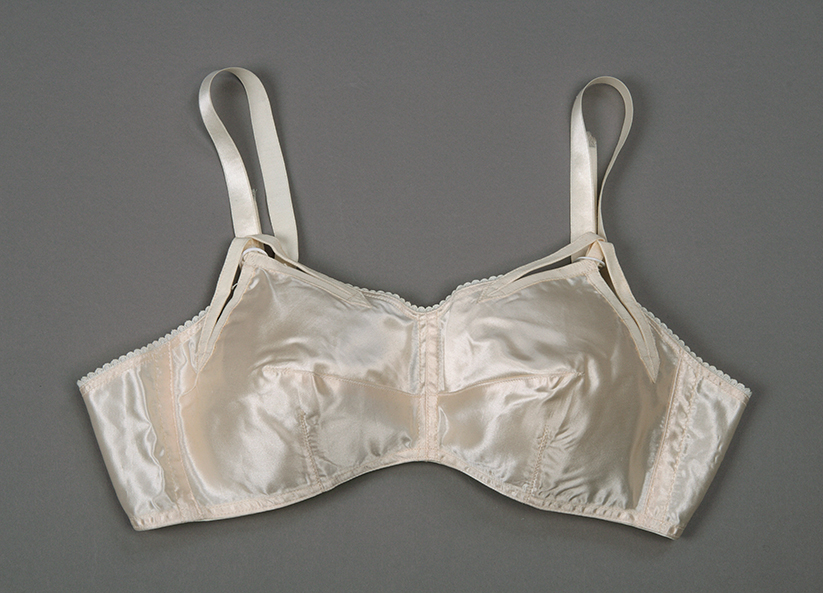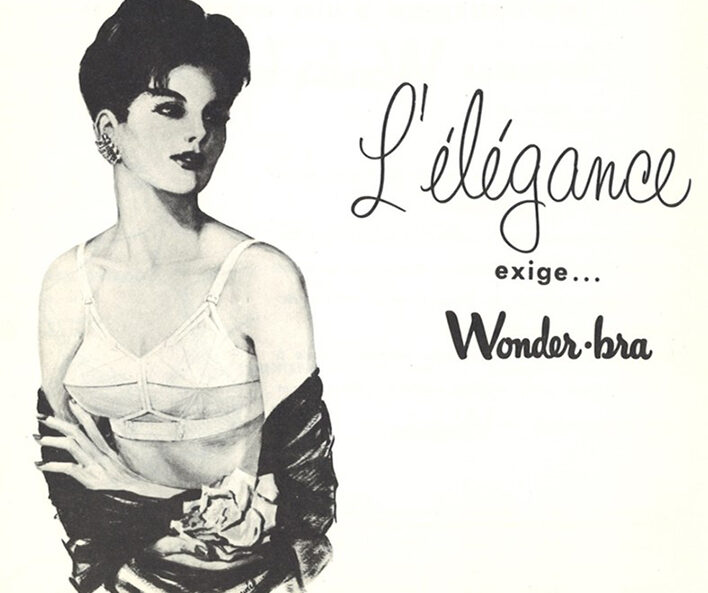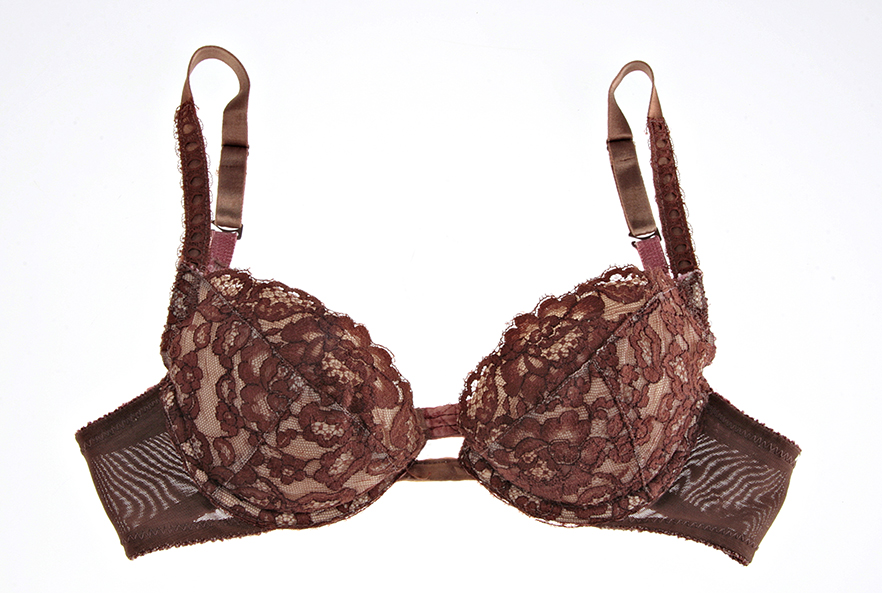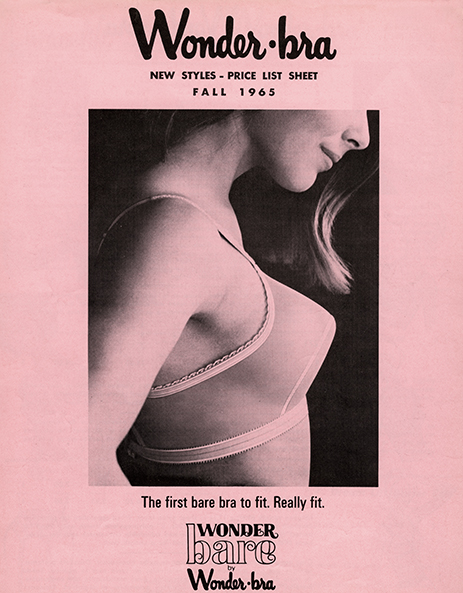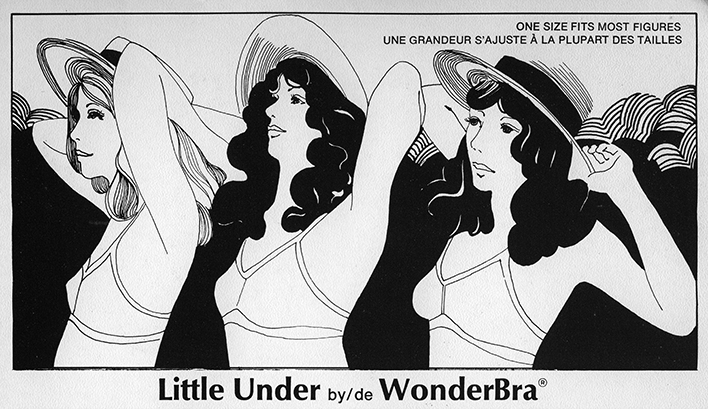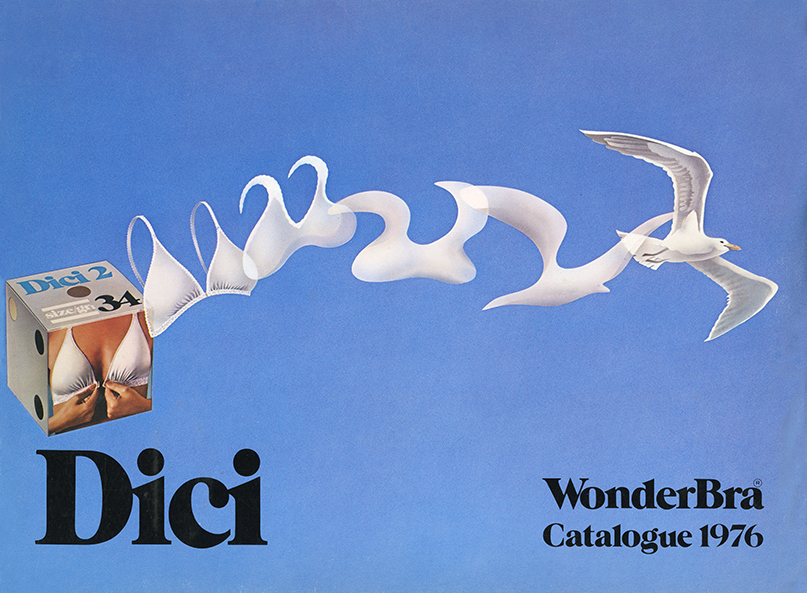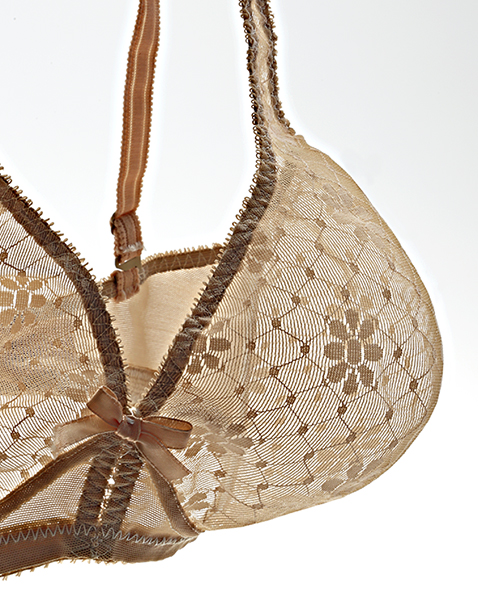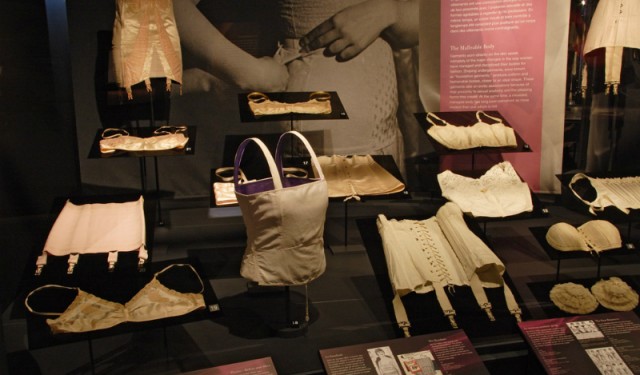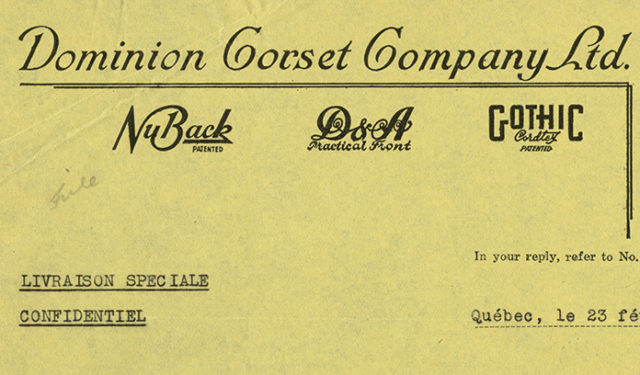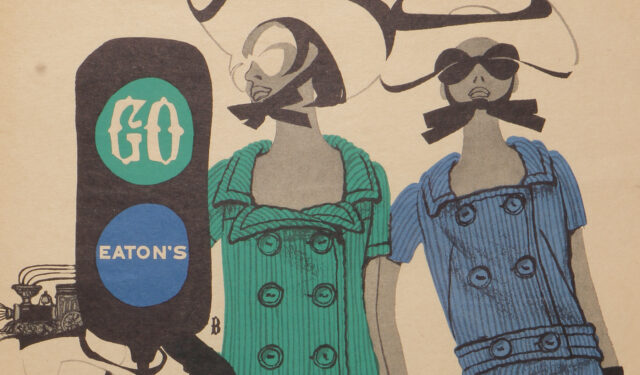Wondeful, wonderful Wonderbra
Discover a brief history of the Canadelle Company, successful Montreal-based manufacturer of the WonderBra brand and more!
February 19, 2024
The history of the Canadelle Company, the successful Montreal-based manufacturer of the WonderBra brand, is little known, even within Canada. Thanks to the initiative of Raymonde Tranchemontagne, a designer for Canadelle from 1967 to 2012, the McCord Stewart Museum acquired an extensive collection of sample foundation garments, catalogues and related ephemeral material dating from the 1940s to the early 2000s.
At the company’s head office in Montreal, Canadelle’s designers had saved a sample of almost every model they created, starting in the 1950s. Unique because of its stylistic breadth, this collection is a testament to the pride that the design staff took in their work, their personal commitment to the company’s success, and their desire to pass knowledge on to future generations of designers
The Original WonderBra and Canadelle’s Beginnings
The first WonderBra was an American invention, created by Israel Pilot’s D’Amour Foundations in New York during the late 1930s. He coined the name “Wonder-Bra” for a brassiere that featured his patented V-shaped diagonal slash shoulder strap attachment. This strap, combined with a bias-cut cup, provided women with a comfortable and expandable garment during World War II, when elastic materials were rationed for military use.
As Pilot’s design was taking off, Moses “Moe” Nadler founded his Canadian Lady Corset Company in Montreal. Moe Nadler was born in Montreal in 1900 to a Romanian-Jewish immigrant family. Nadler started work as a salesclerk at age 11, eventually owning both dry goods stores and a women’s dress business. In 1939, believing that the brassiere business offered more stability than women’s outer garment manufacturing, he set up an office and studio at the corner of Mont-Royal Avenue and St. Lawrence Boulevard.
Nadler signed a licence agreement with Pilot to manufacture and sell the WonderBra in Canada, and received permission to use the diagonal slash strap on other products. Working in his small design studio, he set out to diversify his product line with a focus on attractive, functional, and affordable foundation wear. In the early days, Nadler himself acted as salesperson, travelling across Canada with his wife, Sari, who modeled the garments for prospective buyers.
One of the first Montreal designed and made WonderBras was the Petal Burst and, by 1957, this successful model accounted for 50% of the company’s bra sales. The very pointed silhouette and extreme uplift were created by seams radiating outward from the apex of the breast, producing an effect comparable to that of other figure-controlling brassieres of the era such as American manufacturer Hollywood-Maxwell’s V-ette Whirlpool bras.
Twenty-five years after founding the company, Moe Nadler died in 1964 and his son Larry Nadler, a Harvard-trained MBA, inherited the company. Larry, who would eventually become President and CEO, embraced technological innovation, brought modern marketing strategies to the business, and ushered the company into its golden age. In 1968, Canadian Lady changed its name to Canadelle Inc.
The 1960s and the changing female identity
The foundation wear industry underwent significant changes during the 1960s due to the influence of youth-led fashion, social upheaval, and commercial availability of new synthetic fibers like spandex. The sheer number of teenagers who came of age in the 1960s made them a highly influential segment in society, leading manufacturers to market brassieres created for teenage girls.
WonderBra’s Petal Teen bra first appeared in company catalogues in 1965, providing a more natural look than the pointed, controlling silhouettes of the 1950s, and featured both comfortable spandex stretch straps and a stretchy under-bust band.
Second-wave feminist movements of the decade caused widespread panic amongst foundation wear manufacturers who were worried women would abandon their undergarments, in particular bras, altogether. While numerous companies were unable to grasp the changing female identity of the sixties and went out of business during this tumultuous time, Larry Nadler pragmatically organized focus groups with young women to figure out what they thought of their bras. Amid the sexual revolution of the decade, Nadler realized that what young women actually disliked was what they perceived to be the oppressive, rigid, old-fashioned bras of the 1950s, while bras that were pretty and fashionable made them feel attractive and desirable.
Dreamlift 1300, the first Canadian-made push-up bra
Possibly the most iconic bra created by Canadelle, and the first Canadian-made push-up style, the Dreamlift 1300 debuted in 1966 and was designed with sex appeal in mind. It was a very technical design, created by Louise Poirier, with more than fifty pattern pieces in its construction. This same push-up model was rebranded and caused a sensation in the early 1990s in both the UK and the United States, thanks to international licensing agreements (and the ‘Hello Boys’ advertisement campaign featuring model Eva Herzigova).
The less-bra movement with Wonderbare
Another important conclusion that Nadler reached through talking to young women in Canadelle’s focus groups was that “…the no-bra movement was going to manifest itself primarily as a less-bra movement.” Young women wanted lightweight, comfortable undergarments that created a natural silhouette, and the suggestion of nudity.
The company’s initial response to the trend was the Wonderbare line, first sold in 1966 and marketed as “The Ultimate in Bare Underfashion.” Wonderbare was aligned with other lightweight garments of the sixties such as Rudi Gernreich’s No Bra for Exquisite Form, but was made in a wider variety of supports, sizes and styles. While Wonderbare was created with body diversity in mind, the limited colour palette of white, black and a pale pink “skin tone” shade bears witness to the pervasiveness of the normalcy of whiteness in the naming of colours at the time.
In addition to Wonderbare, Canadelle was marketing other brands with names such as The Little Under and Like Nothing On, starting in the late 1960s. These lightweight bras were very simple in terms of construction and made from synthetic stretch fabrics, yet all were cut-and-sewn garments.
Fabric moulding and the Dici Brand
Innovative international companies had already been experimenting with ways to make bras even more invisible, including the hot moulding of synthetic fabrics to create a completely seamless bra cup. French company Huit 8, founded in 1968, was the first to market and sell moulded bras in the early 1970s.
The Huit bras were very stylish but, according to Larry Nadler, had a poor, inconsistent fit and high price. Despite the drawbacks, the bras were popular in Canada, especially in Quebec, and Larry Nadler travelled to France during the early seventies to secure a licence agreement with Huit. It was unfortunately refused, but, as Nadler recalled, what he had learned about moulding “…in that one hour in their offices made the whole trip worthwhile.”
Around 1972, Nadler set up two task forces at the Canadelle headquarters in Montreal—one dedicated to marketing a new lingerie brand to young women, and a technical team to develop a superior fabric moulding technique. The technical team pulled employees from all the departments who worked with outside textile experts, along with chemists and a sculptor who shaped metal breasts for use as a mould. After much experimentation, the team succeeded, and Canadelle became true experts in high-quality fabric moulding. Nadler holds a patent for the hot moulding apparatus Canadelle designed and went on to lucratively license the technology internationally.
With the help of the marketing task force, Nadler discovered that young women disliked the WonderBra name as they associated it with an older demographic. In 1974, Canadelle released their seamless, moulded cup bras under the brand name Dici, aimed specifically at a youth market. A new slogan, “Dici or Nothing,” was developed for the brand, with a dove motif to emphasize youth, lightness and freedom. The bras were sold in dice-shaped boxes, which had small holes where the customer could see and feel the product.
The bras were available in colours like pink, yellow and blue, with some models cut from a delicate floral stretch lace. However, the beige shade labelled “skin tone” continued to deny the possibility of a more diverse customer base.
Dici was wildly successful for Canadelle, significantly contributing to a near doubling of company sales between 1970 and 1976.
From Canadelle to HanesBrands
By 1979, Canadelle held about 30% of the Canadian brassiere market share, the same year American HanesBrands Inc. acquired the company. Larry Nadler retired in 1980, thus ending 41 years of Canadian ownership or management. In 2014, HanesBrands centralized some parts of its organization, moving the company’s headquarters to Winston-Salem, North Carolina. A Montreal sales office and distribution center (coupled with an additional sales office in Toronto) remained open and continue to operate today.
HanesBrands maintains manufacturing WonderBra today, and Moe Nadler’s foundational brand philosophy of offering a stylish, functional, and affordable product for women endures 85 years later.
Selected sources
“Diagonal Slash Feature of Brassiere’s Design,” Style, July 2, 1964, p. 37.
“Mo Nadler Dies After Long Illness,” Style, March 1, 1965, p. 55.
Emily Prager, “Underwire Wars,” The New York Times, January 16, 1994, 4.
Alan D. Gray, “Bra makers back from the brink: Innovation, technology boost Canadelle,” Financial Times of Canada, September 3, 1979, p. 10.
Larry Nadler in discussion with author, November 18, 2015.
Raymonde Tranchemontagne in discussion with author, December 8, 2015.

